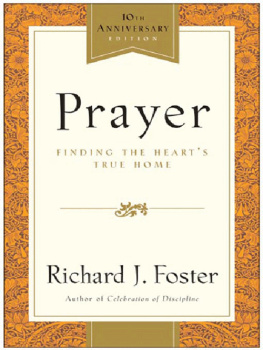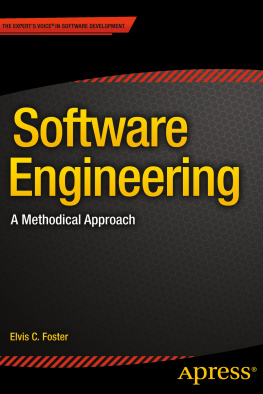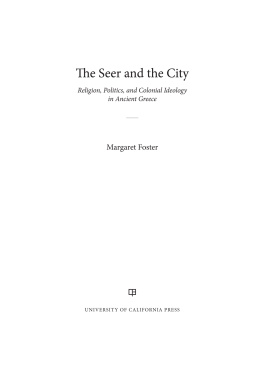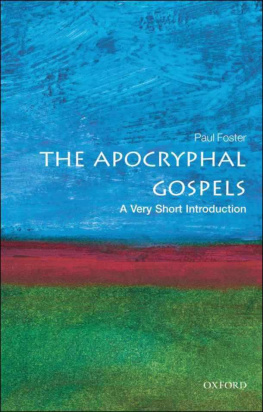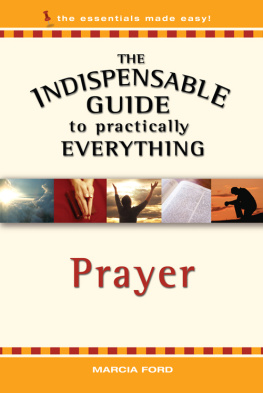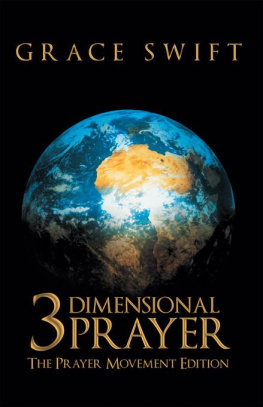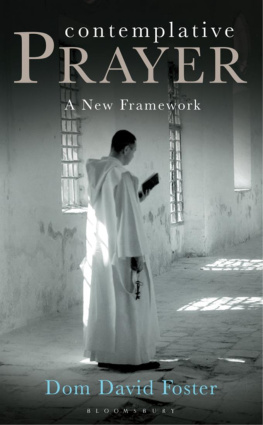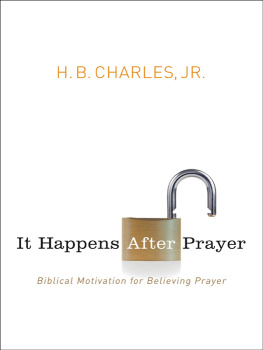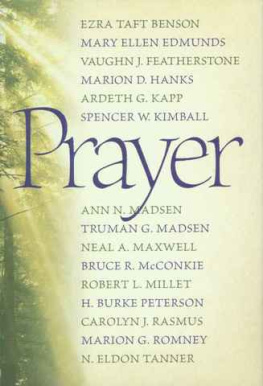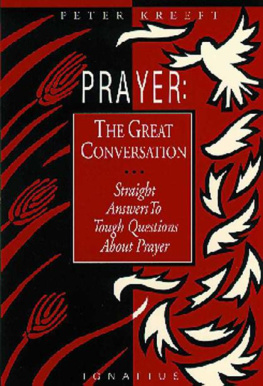As a child I heard Eugene and Jean quip about being a pair of jeans. They spoke more than they knew. For over fifty years now they have had a compassionate ministry that is inseparable and wears well.
It is never possible for any of us to cover the list of those who have shaped us. When writing a book, the problem only intensifies. I cannot thank everyone, but I will thank some in hopes that they will symbolize the many who remain anonymous.
I am grateful to those who read all or part of the manuscript and provided valuable suggestions: Carolynn Foster, Nathan Foster, Lynda Graybeal, Dotsy Hill, Janet Janzen, and Carol Mullikin. In addition, I read various chapters at the weekly meetings of The Milton Center, and its members gave me valuable critique and encouragement. I thank them: Harold Fickett, Janine Hathaway, Frank Kastor, David Owens, Virginia Stem Owens, Charles Parker, Bruce Parmenter, and Jim Smith.
I want to thank my former parishioners and students, who helped me test these ideas over many years in both theory and practice. They have been my teachers. I am also indebted to a special group of individuals who prayed for me throughout this writing and held up my often sagging arms: Wendell Barnett, Ken and Doris Boyce, Karen Christensen, Taddie Gunn, Dotsy Hill, Ed and Alice Kerr, Claudia Mitchell, Bonnie Parker, Betse Rockwood, Sarah Smith, Dallas and Jane Willard, Jean Winslow, and Dick and Gayle Withnell. In addition I express gratitude to Kandace Hawkinson of Harper San Francisco for her editorial skill and warm encouragement.
I thank Lynda Graybeal for overseeing the office and fulfilling duties too numerous to mention so I could be free to write. And finally, I thank God for Carolynn, who prayed with me and for me from the conception to the birth of this book.
For a long time I have wanted to write on the subject of prayer. To do so, however, would have been to commit the sin of presumption. I was not ready. I had moremuch moreto learn, to experience. With many subjects it is perfectly acceptable to share ones wanderings and wanderings, but this is not true with prayer. Prayer ushers us into the Holy of Holies, where we bow before the deepest mysteries of the faith, and one fears to touch the Ark. The years have come and gone, and while I am still a novice in the ways of prayer (who can ever master something in which the main object is to be mastered?), I somehow sense the divine nod of approval. Now is the time. And so I am writing, and in my writing I am speaking for all the prayerless persons I have been and all the prayerful persons I hope to become.
Throughout I will be seeking to name our experiences of prayer, a little like Adam in the Garden naming the animals. I hope in this way to define something of the character of our dialogue with God. Countless people, you see, pray far more than they know. Often they have such a stained-glass image of prayer that they fail to recognize what they are experiencing as prayer and so condemn themselves for not praying. And so I trust that many passages in this book will be instantly recognizablemaking you think, Of course! Ive experienced that! By naming our experiences, I hope to increase our understanding of what God is doing among us so we can be more intentional in our practice.
I should, at the outset, comment on the special linguistic problem in addressing God. The personal pronoun is one expression of this, and attempts to solve this problem with dashes and slashes are semantically awkward and aesthetically abhorrent. I have, therefore, chosen to follow the standard usage of the masculine pronoun, although I am keenly aware of the inadequacies of this approach. I am the first to admit that our language is simply limited here. Clearly, God incorporates and transcends our categories of sexualitythat is, God is not a male deity as opposed to a female deity.
Actually, Jesus use of Abba praying was an inclusive action. By the use of the diminutive for father, Jesus reveals that our relationship with God involves not only the strength and empowerment commonly identified with masculinity, but also the nurturing and caring intimacy often associated with femininity.
A brief note about the structure of this book might be useful. Without pressing the analogy too far, it is helpful to see that the three movements into prayer are trinitarian in character. The movement inward (Part I) is prayer to God the Son, Jesus Christ, which corresponds to his role as Savior and Teacher among us. The movement upward (Part II) is prayer to God the Father, which corresponds to his role as sovereign King and eternal Lover among us. The movement outward (Part III) is prayer to God the Holy Spirit, which corresponds to his role as Empowerer and Evangelist among us. The movement inward comes first simply because God has revealed himself to us most fully and most clearly in Jesus Christ.
One small word of counsel before we strike out onto this disciplined journey into the holy place: healthy prayer necessitates frequent experiences of the common, earthy, run-of-the-mill variety. Like walks, and talks, and good wholesome laughter. Like work in the yard, and chitchat with the neighbors, and washing windows. Like loving our spouse, and playing with our kids, and working with our colleagues. To be spiritually fit to scale the Himalayas of the spirit, we need regular exercise in the hills and valleys of ordinary life.
Richard J. Foster
January 1, 1992
Coming Home:
An Invitation to Prayer
True, whole prayer is nothing but love. St. Augustine
God has graciously allowed me to catch a glimpse into his heart, and I want to share with you what I have seen. Today the heart of God is an open wound of love. He aches over our distance and preoccupation. He mourns that we do not draw near to him. He grieves that we have forgotten him. He weeps over our obsession with muchness and manyness. He longs for our presence.
And he is inviting youand meto come home, to come home to where we belong, to come home to that for which we were created. His arms are stretched out wide to receive us. His heart is enlarged to take us in.
For too long we have been in a far country: a country of noise and hurry and crowds, a country of climb and push and shove, a country of frustration and fear and intimidation. And he welcomes us home: home to serenity and peace and joy, home to friendship and fellowship and openness, home to intimacy and acceptance and affirmation.
We do not need to be shy. He invites us into the living room of his heart, where we can put on old slippers and share freely. He invites us into the kitchen of his friendship, where chatter and batter mix in good fun. He invites us into the dining room of his strength, where we can feast to our hearts delight. He invites us into the study of his wisdom, where we can learn and grow and stretchand ask all the questions we want. He invites us into the workshop of his creativity, where we can be co-laborers with him, working together to determine the outcomes of events. He invites us into the bedroom of his rest, where new peace is found and where we can be naked and vulnerable and free. It is also the place of deepest intimacy, where we know and are known to the fullest.
The Key and the Door
The key to this home, this heart of God, is prayer. Perhaps you have never prayed before except in anguish or terror. It may be that the only time the Divine Name has been on your lips has been in angry expletives. Never mind. I am here to tell you that the Fathers heart is open wideyou are welcome to come in.

